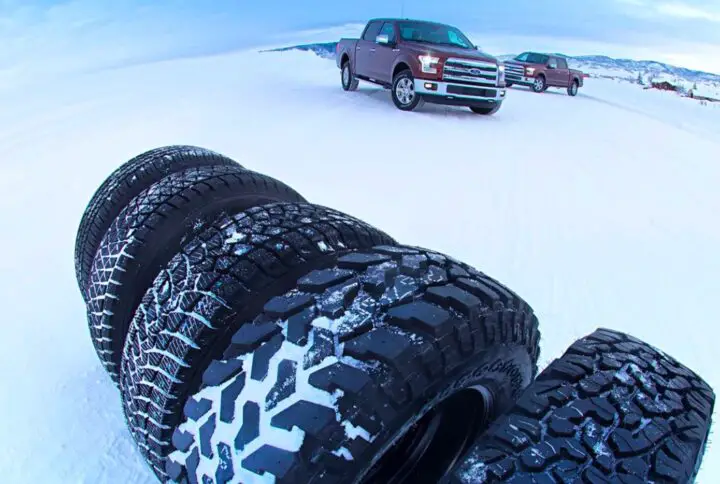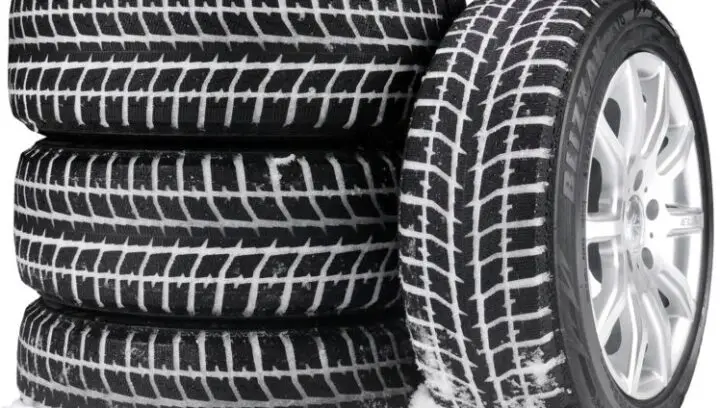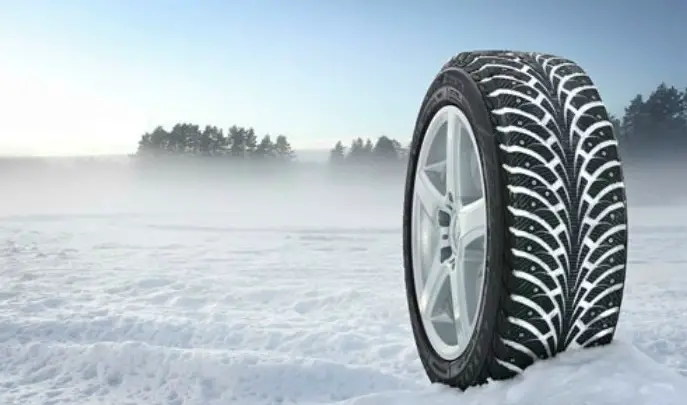Have you ever been driving in the winter and slid on black ice? Maybe you’ve had to drive through a snow storm, or were faced with an icy patch. If so, then you know that it’s critical to have tires that are designed for cold weather. If you live in an area that sees decent quantities of snow and ice each year, you will want to get some winter tires for your car to ensure the best traction and safety during the winter.
In this blog post we’ll explore the differences between all-season tires and winter tires, as well as discuss when it’s necessary to switch from one type of tire to another.
There is a high chance that your car is equipped with all-season tires that have an M+S (Mud & Snow) rating, which might give you the impression that you don’t really need winter tires. However, there are some distinct differences between all-season tires and winter ones. These differences eventually lead to one conclusion: winter tires are the best choice during winter or winter-like conditions.

All-season tires are ones that can be used throughout the year. Yes, they do perform decently all year round. However, they aren’t really the best choice in true wintery or summery conditions.
Another flaw about all-season tires is the fact that they vary greatly in design choices, primarily in regard to hardness, tread voids, and siping. In other words, some all-season tires perform incredibly well in summer but very poorly during winter, and the opposite is true.
As for winter tires, well, they are designed to run at temperatures of 45 ° Fahrenheit and lower smoothly. They also feature a unique tread compound designed to perform well on snow, ice, rain, as well as dry but cold pavement.
You can get a winter tire for a passenger car, SUV, truck, and more. If you are looking for optimal comfort, traction, and smoothness when driving during winter, then you should probably get your hands on a full set of winter tires.
To further illustrate the difference between all-season and winter tires, we have broken down the differences into seven key categories, which are: tread compound, tread depth, siping, tire life/wear, air pressure, and comfort of the ride.
Table of Contents
Tire Compound Differences
There are a few differences in the tread compound between a winter tire and an all-season one. There are three main kinds of compounds, a summer compound, an all-season compound, and a winter compound.
- A summer compound is made to operate in higher temperatures and is usually below average in lower temperatures.
- An all-season compound is designed with a balanced use for both winter and summer duties.
- A winter compound is made to operate in lower temperatures.
So, most all-season tires can provide your car with enough traction on snow and ice and get you through the winter. However, winter tires come with a specific compound that is uniquely designed to remain pliable as well as enhance traction in colder than usual climates.
However, these same compound traits that make a winter tire great in cold climates make it an exceptionally poor choice during summer. This is due to the fact that the winter tire compound becomes softer rather quickly in hot temperatures. It also gets distorted in the tread area, which results in poor handling and rapid wear.

Tire Siping Differences
A tire’s siping is meant to improve traction on slippery surfaces such as ice, snow, and rain. Every sipe on a tire gives it a biting edge for traction. In other words, the more sipes, the better the traction. So, it should come as no surprise that winter tires tend to have more siping than all-season ones.
However, siping greatly increases the flexibility of the tires, which can lead to a significant reduction in your handling ability. Some all-season tires come with a compromise to counter this, in the form of a harder tread compound.
All in all, good winter tires should have a balance of siping and tread compound hardness which allows them to excel in rain, snow, and ice.
Tread Depth
Tread depth is the usual standard on most passenger car tires regardless of their type (all-season, summer, winter). These tires usually have a tread depth that sits somewhere between 9/32 and 12/32s when brand new.
In general, a deeper tread depth equals better traction is softer than usual conditions such as unpacked snow or mud. However, too much depth can lead to tread squirm on dry, hard pavement.
A tread depth of 4/32 is perfect for a ride on packed snow, ice, or rain, enabling you to drive safely and smoothly. However, once your tires read this tread depth, you might want to consider replacing them soon.
Snow Studs
Snow studs are an option that is available on some winter and all-season tires. They improve traction on ice, but not as much on snow. In the U.S., you can get your hands on two types of winter tires: studded and studless.
A studded winter tire won’t be as pliable as a studless one since it needs to have a tread compound that is hard enough to keep the studs fixed in place.
Studded winter tires work perfectly fine with studs equipped, but if they aren’t on, the tire won’t be as good as a regular studless winter tire.

Winter Tire Life And Wear
All-season tires, as the name already suggests, are designed to be driven all year round. Winter tires, on the other hand, are meant to come off the vehicle as soon as winter ends.
If you are a daily driver, you will likely get about three seasons out of your winter tires due to tread wear. If you plan to install previously-used winter tires, make sure to ask whoever is installing them for you to check if there is less than 5/32s of tread depth. If that’s the case, then you probably have to buy new ones.
Tire Pressure
Tire pressures do not differ between equivalently sized winter and all-season tires equipped on the same car. Instead, it’s dictated by the vehicle placard, which is usually located in the driver door jam.
Ride Comfort
Ride comfort depends on a number of different factors, mainly the tire’s carcass construction and tread compound. The construction of winter tires, for instance, is obviously designed for winter attributes. However, there isn’t much difference between the construction of a winter tire and an all-season one.
The differences, as we’ve mentioned at the start of the article, lies within the compound. A winter tire’s unique compound is meant to create a smoother driving experience in colder climates. This might not be the case for studded tires, however, since the studs do cause a bumpy ride.
So, if you want the smoothest ride possible in cold climates, you should opt for the premium, studless winter tires.
Most winter tires are meant to be used on packed snow and ice, normally found in the colder conditions of the U.S. However, if you plan on driving on deep, loose snow, then you should probably get “off-road” tires with noticeably larger tread voids and deeper treads.
No matter the type of car you’re using, a rear-wheel one, a front-wheel one, or an all-wheel one, it will largely benefit from using winter tires in the snow. We don’t recommend only running a pair of winter tires on the driving axle. Instead, you should replace all four tires with winter ones during the winter for the best experience.

Main Takeaways – Winter Tires vs. Mud And Snow Tires
There are a lot of factors to take into account when deciding between winter tires and mud and snow tires. Ultimately, the decision is up to you but if there’s anything we can do to help steer your choice in one direction or another, please don’t hesitate to get in touch! We hope this article has been helpful for you so far. Here’s some more information about speed limits with these two types of tires.
The difference between winter tires and mud and snow tires is in what they’re made of. Winter tires are typically softer, which means that the tread can grip better on slippery surfaces like ice or wet pavement. This makes them perfect for driving on roads with less traction during cold weather months.
Mud and Snow Tires have a harder rubber compound that’s designed to cover more surface area– this provides increased stability at high speeds when you need it most (especially if you live in an area where there’s lots of rain).
When deciding whether to buy some new wheels, take into account your environment as well as how often you drive– these two factors will help determine which type are best for you!
